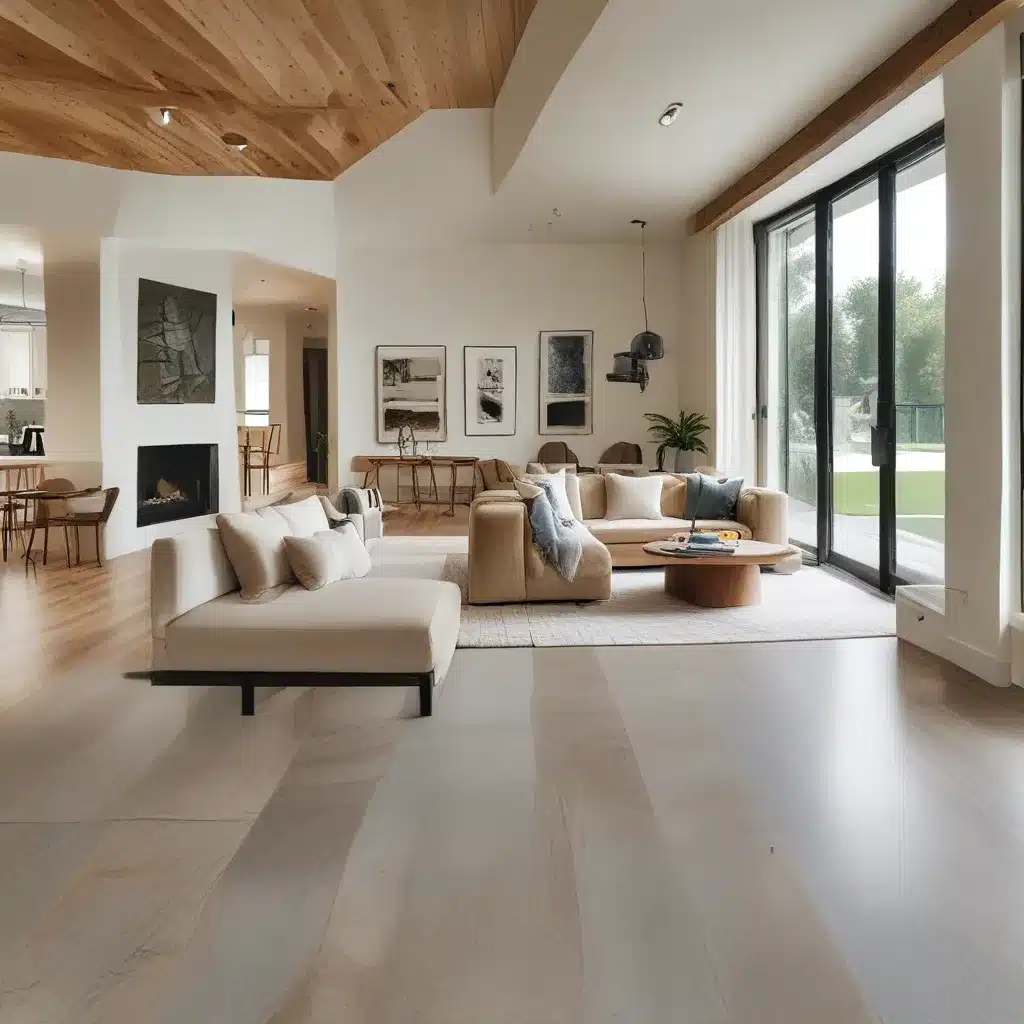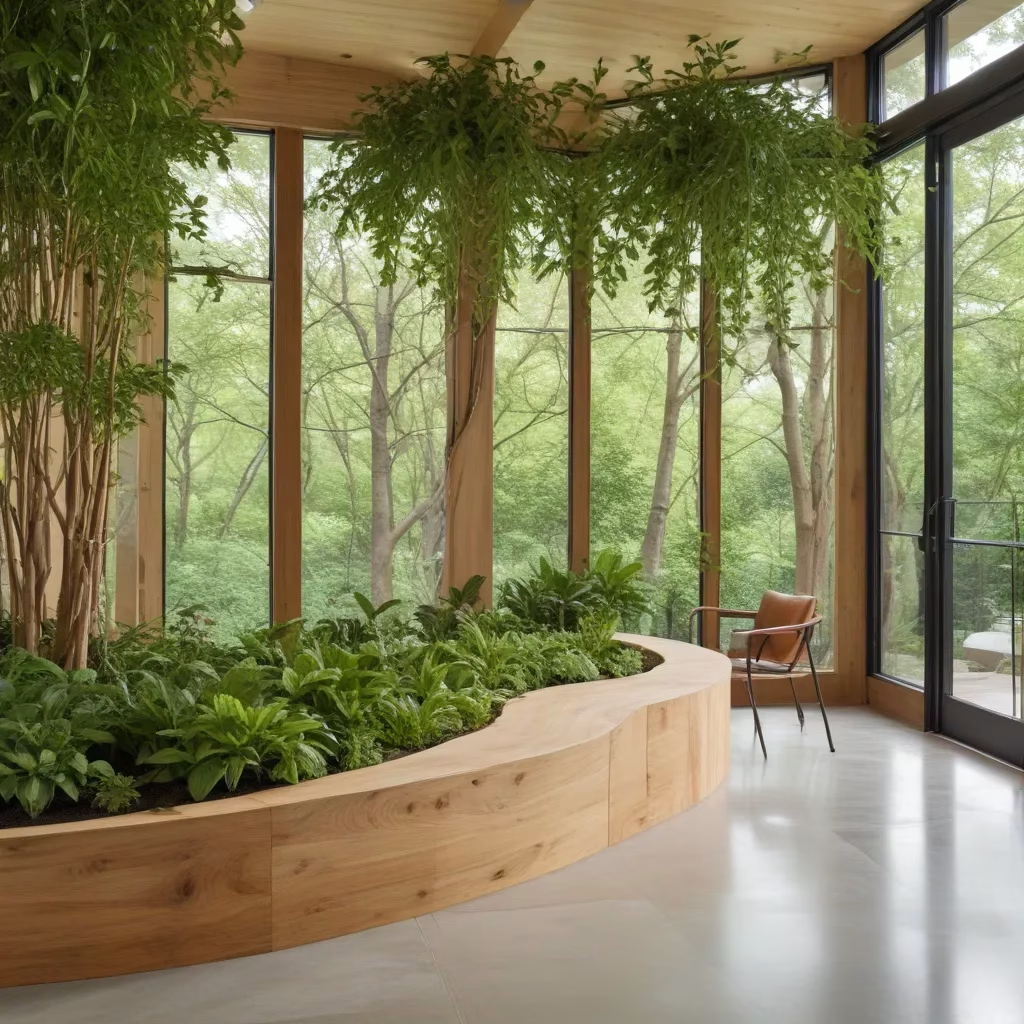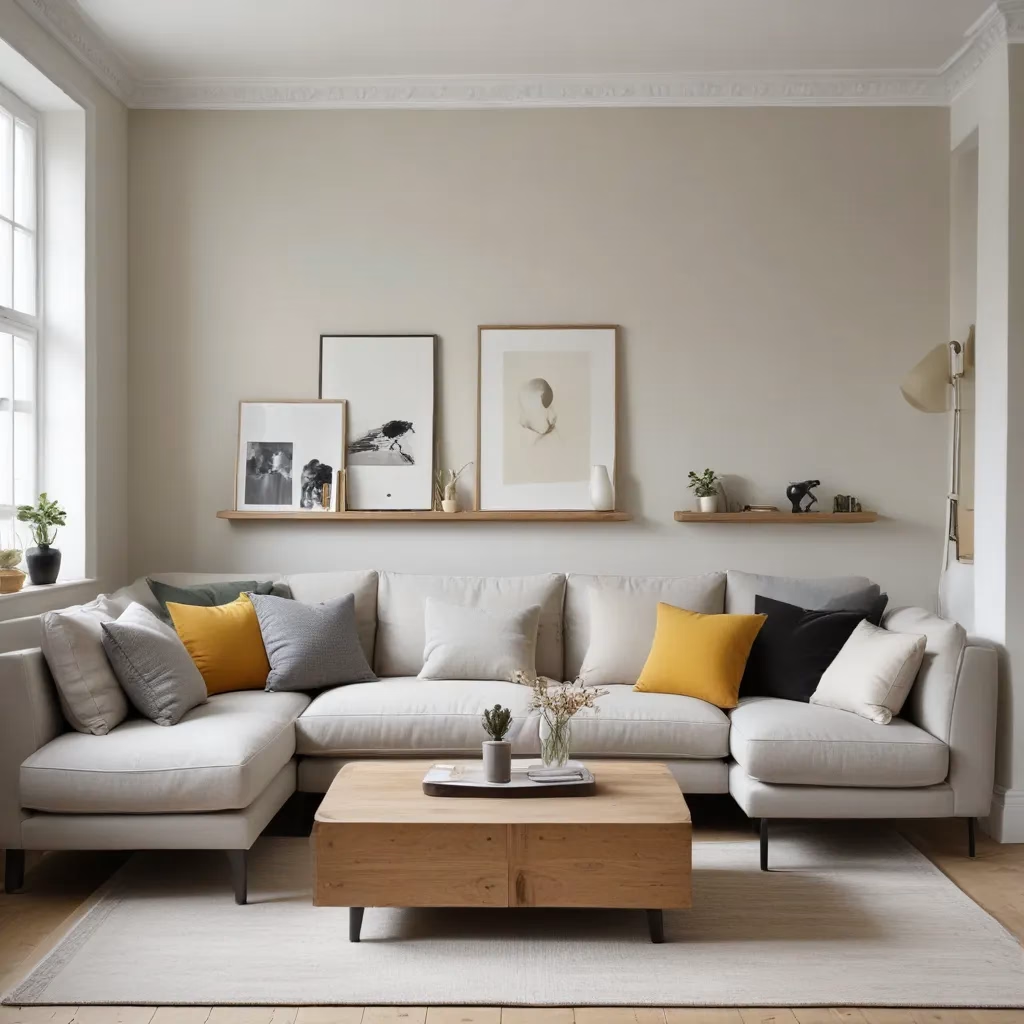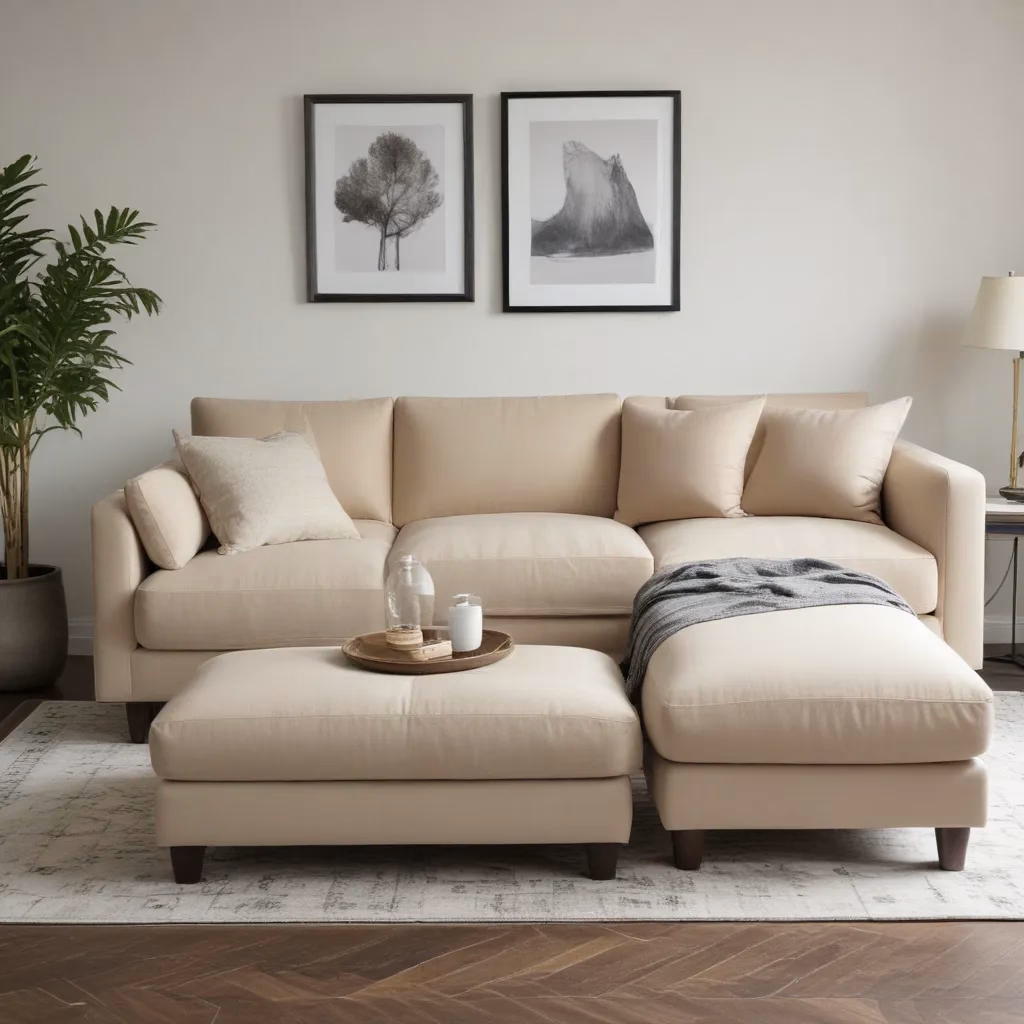Embracing the Chaos: My Love-Hate Relationship with Open Floor Plans
You know that guy who roams around the agency, plopping down on a random couch whenever the mood strikes? That’s me. I hate sitting in one position, and sometimes I even hate sitting in general, so I’ll go outside and lay on the grass. (GSDM has the most beautiful, manicured plot of grass in Austin – it’s a thick, green carpet of natural softness.)
Of course, now that you know of my disdain for cubicles, I’ll also tell you about my non-love of open floor plans. If I’m writing or creating a new Excel template, I often like to hole up somewhere I can focus, and no one can bother me. Let me tell you, the guy walking into the shower room at 9 am was pretty surprised when I greeted him with a laptop and coffee in hand.
So which is a better office layout – the open floor plan or cube-land? Well, honestly, I think both ideas are terrible. The simple fact is, no one has truly explored any alternatives. In this world of polarizing opposites, one side always has to win. Those advocating for openness (this guy, Yahoo article) want no walls and glass everywhere, while those advocating for more privacy (this guy, Fast Company article) desire individual offices with solid oak doors, brandy, and leather-bound books.
I find it funny because both sides seem to be arguing for the same idea of freedom, but with alternate definitions. For some people, freedom is open space and insight into what everyone else is doing, but for others, it’s the opposite. Office layouts are built to maximize the productivity of people, so to shoehorn a person into a layout that makes them uncomfortable doesn’t make economic sense.
Striking a Balance: The Elusive Third Option
I believe that there’s a third option for office layouts – a combination of free-flowing ideas and focus. Office spaces should be built to be flexible for people to work where and how they want to work. Build different spaces within the office, from sound-deadened, small and secluded nooks for those who want to focus, to open-concept spaces with high tables, bar stools, and flat screens for those who crave collaboration and conversation.
In my humble opinion, companies should ditch the entire idea of “open concept vs. office space” because either way, someone’s going to be unhappy. We should build our offices with many organic spaces that people feel comfortable in, whatever their working style is on a particular day.
Anyways, since we’re on the topic of comfort, I just bought a hammock. I wonder how I can get that to work in my cube.
Open Floor Plans: The Best of Both Worlds?
While my personal preferences may lean towards a more eclectic, customizable office space, the debate over open floor plans versus traditional layouts rages on in the world of residential design as well. As a custom sofa company in the UK, we at Sofa Spectacular have a vested interest in understanding how the layout of a home can impact the way people live, interact, and utilize their living spaces.
The open-concept home, a modern architectural design, integrates multiple common living spaces into one large area, effectively eliminating the need for traditional room dividers such as walls and doors. The main goal of open concepts is to create a continuous and visually connected space that promotes a higher level of social interaction, light penetration, and ease of mobility within the same large space. This style is widely adopted in contemporary construction projects for its ability to provide more natural light throughout large spaces and make those within the home feel more connected.
The key elements of an open-concept floorplan include merging living areas such as the living room, dining room, and kitchen into an interconnected space with minimal barriers. To maintain an open feel while preserving functionality, designers often employ strategic furniture placement and modular storage solutions that double as room dividers. Finally, consistent color schemes and flooring materials are used throughout the space to achieve visual cohesion and continuity within the interconnected environment.
The Allure of Open-Concept Living
Indeed, there are certain advantages to the open-concept floor plan that have made it increasingly popular in modern home designs, including its effects on creating a spacious feel, enhancing social interaction, facilitating easier supervision of children, and increasing natural light.
One of the main attractions of the open-concept floor plan is its ability to create a spacious and airy atmosphere within your home. By eliminating walls and barriers between rooms, the space feels larger and more inviting. An open-concept layout can make smaller homes seem much more expansive while adding an element of sophistication to larger homes.
The open-concept design allows for easy movement between living areas and fosters a sense of unity in your house. An open-concept floor plan encourages increased social interaction among family members and guests. With fewer walls separating people, conversations can flow more naturally, and shared experiences are enjoyed more easily. Entertaining becomes less about individuals strategically dispersed around the home and more about creating a cohesive group experience.
Open floorplans can also be a practical choice for families with young children or even pets. The design allows parents to keep an eye on their little ones from various areas within the home without much obstruction. The lack of walls creates clear sightlines throughout the space, meaning that parents can easily supervise their children while still being able to attend to other tasks such as cooking or socializing with guests.
A final benefit of open layouts is their ability to maximize natural light within your home. Moving from traditional floor plans with numerous walls can significantly reduce dark corners and shadows often resulting from this arrangement. Open floor plans allow sunlight to flow more freely throughout the space, creating a brighter and more cheerful atmosphere, promoting a healthier living environment, and reducing the need for artificial lighting, thus saving on energy costs.
The Challenges of Open-Concept Living
Despite the growing popularity of open floor plans, this design trend isn’t for everyone. There are certain cons that are worth considering before deciding to adopt an open floor layout.
One of the most evident drawbacks of an open layout is the lack of private space. With walls and doors removed, spaces blend into one another, resulting in limited options for privacy. An open-concept layout can be especially challenging for households with different schedules or varying preferences for personal space. Without designated areas to retreat to, it becomes more difficult to create quiet corners where family members can unwind, concentrate on individual tasks, or find a quiet space for self-reflection.
Open concepts offer little in terms of noise control or separation. Sound tends to travel easily across the open floor, making it difficult for household members to focus on their activities or have individual conversations. This lack of noise reduction is also a dilemma when entertaining guests, as lively conversations and background music unavoidably fill up the entire home. An open-concept floor plan might not be the best choice for those who desire a quiet environment or are sensitive to excessive noise levels.
As open-concept homes tend to incorporate large living areas without clear divisions, there may be energy efficiency concerns related to heating and cooling. Fewer walls and doors in place can make the home less energy efficient. Temperature regulation becomes less manageable as heat or cool air flows unimpeded throughout your home. This translates to higher energy consumption and may result in inconsistent temperatures across rooms, ultimately leading to discomfort for occupants throughout different parts of the house.
The Enduring Appeal of Traditional Floor Plans
While open-concept floor plans provide undeniable aesthetic appeal and opportunities for increased social interaction, they come with disadvantages such as limited privacy, noise level considerations, and energy efficiency concerns. This has led many homeowners to consider the merits of a more traditional floor plan.
A traditional floor plan is a type of architectural design that prioritizes distinct and separate rooms for various purposes. In contrast to open-concept layouts where spaces flow seamlessly into one another, a home with a traditional floor plan has clearly defined areas for living, dining, sleeping, and other activities. Key elements of a traditional floor plan may include hallways, doors, or other partitions between rooms, and often feature smaller, separated spaces.
One of the primary advantages of traditional floor plans is the presence of well-defined rooms, each with a distinct purpose. A traditional floor plan design makes it easy for homeowners to allocate spaces for specific activities, such as cooking in the kitchen, dining in the dining room, or relaxing in the living room. This clear separation allows for better organization and less clutter, as things can be kept within their assigned areas. Moreover, having designated rooms means you can tailor each space to accommodate the particular needs of different family members, from creating a quiet study area to setting up a lively playroom for children.
Another significant benefit of traditional floor plans is the provision of greater privacy and superior noise control compared to open-concept designs. With separate rooms featuring walls and doors, it’s easier to establish boundaries between different living areas. A traditional layout ensures that family members can enjoy privacy when needed, such as by retreating into their bedrooms or working in a home office without distraction. The separation also aids in making rooms feel cozier, and noise from appliances or entertainment systems is more easily confined within specific rooms.
The Efficiency Advantage of Traditional Designs
A traditional floor plan also offers higher energy efficiency than its open-concept counterparts. Since multiple enclosed rooms effectively act as barriers between heated or cooled spaces, less energy is needed to maintain a comfortable temperature throughout the home. For example, during cold winter months, you can heat only the occupied parts of the house, thereby saving on heating costs. Similarly, during summer, you can cool select rooms rather than using more energy to maintain a comfortable temperature in an open-concept space.
While traditional floor plans have their appeal, they also come with several cons that can make living in such a closed space feel less than ideal. Some homeowners may feel cramped and disconnected within such a space and find the limited flexibility hinders carrying out their design or decorating ideas.
The first major downside to traditional floor plans is the sense of confinement that many people experience in these spaces. With walls dividing each room, the flow between living spaces is not as smooth as in open-concept homes, which can lead to feeling boxed in or restricted within your own home. Moreover, the walls limit physical movement and create barriers to communication and social interaction, making it harder to keep an eye on children or converse with family members while preparing meals. Additionally, traditional floor plans often lack the natural light and airiness of open concepts, as without large windows and open spaces, rooms can feel dark and gloomy – a far cry from the bright, welcoming atmosphere that many homeowners desire.
Another disadvantage of traditional floor plans lies in their limited flexibility in accommodating changing design preferences. As personal tastes evolve, it’s only natural to want to update your living space accordingly. However, this is often easier said than done with a closed-off layout. Knocking down walls to create an open plan can be costly and complicated in these homes, with potential issues arising with load-bearing walls or utility placement. Furthermore, rearranging furniture or altering room configurations may prove challenging due to the unyielding nature of the layout, as the fixed walls and compartmentalized design don’t allow much wiggle room for experimentation or change.
Balancing Needs and Preferences
When deciding between open concept and traditional floor plans, several factors should be taken into consideration. You should weigh personal preferences and lifestyle needs, budget constraints, future family planning, and potential resale value to make an informed decision that best suits your individual circumstances.
One of the primary factors in choosing a floor plan is considering your preferences and lifestyle needs. Open-concept spaces typically provide a more modern, airy feeling and encourage a greater sense of connection among household inhabitants. An open-concept layout can particularly benefit those who enjoy entertaining or have young children requiring constant supervision. Conversely, traditional floor plans, which often include separate rooms and compartments, may appeal to you if you prefer more privacy or separation between various living areas.
Budget can also play a significant role in determining the appropriate floor plan for your home. Open-concept spaces may require fewer walls and potentially less square footage while maintaining a spacious feel. However, depending on the materials used and the ultimate design, costs related to heating or cooling an open space could become a factor. Traditional layouts might demand more construction materials due to additional walls and sometimes require less expensive HVAC systems.
Anticipating changes in family size or demographics is another essential aspect when selecting a floor plan. An open concept may seem more fitting for young couples or those with small children because there are fewer walls to worry about childproofing. However, as children grow older, they may desire separate spaces for privacy and autonomy. Additionally, if you plan on taking care of elderly relatives in your home, you might favor a traditional design that offers separate living quarters with increased accessibility.
Although it’s important to consider your needs and preferences when choosing a layout, factoring in potential resale value can ensure long-term satisfaction with your investment. In recent years, open-concept designs have experienced increased popularity among buyers seeking modernized homes with abundant light sources. However, traditional floor plans still maintain their charm, and some prospective buyers may opt for this layout style, wanting distinctive spaces or more clearly defined rooms.
Ultimately, deciding between an open concept or a traditional floor plan is subjective and will depend on several factors. By carefully considering your preferences and lifestyle needs, budget constraints, future family planning, and potential resale value, you can make an informed choice that best suits you and your family for years to come.




